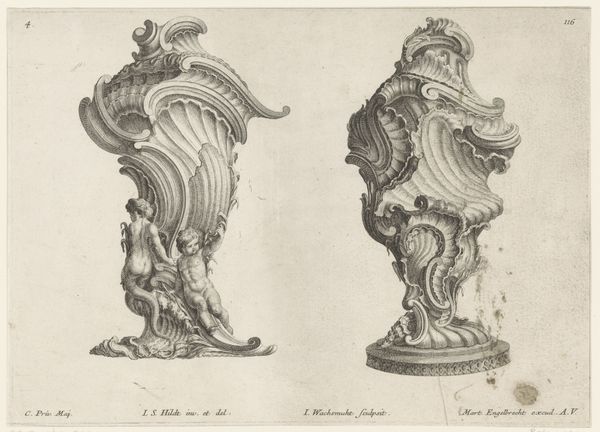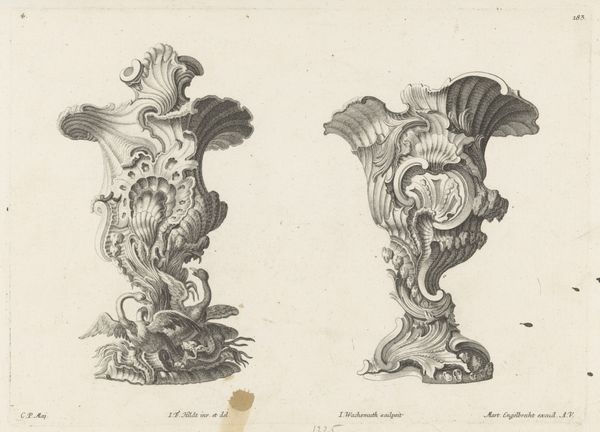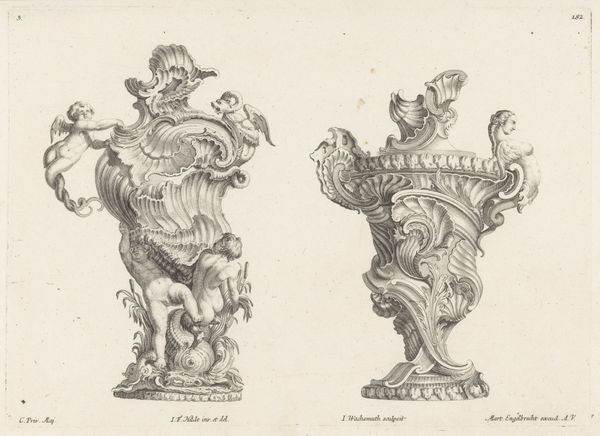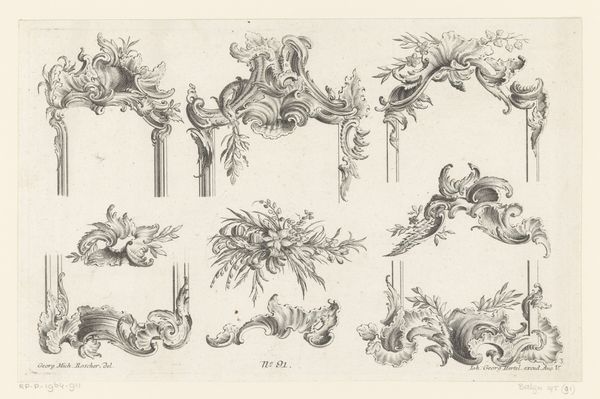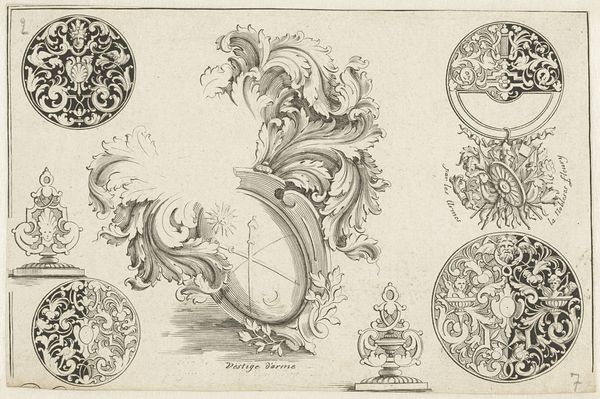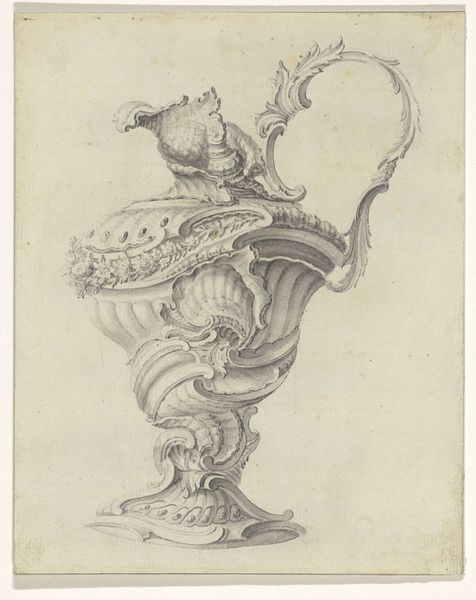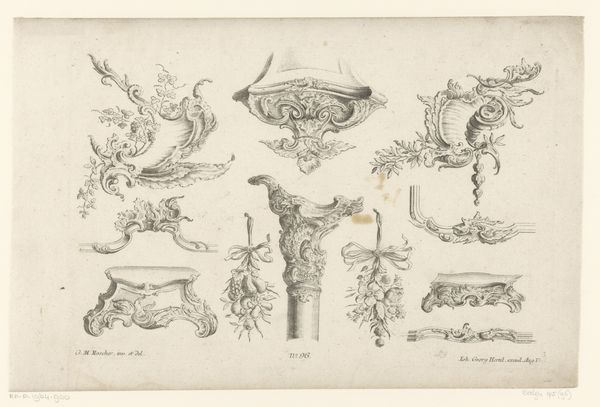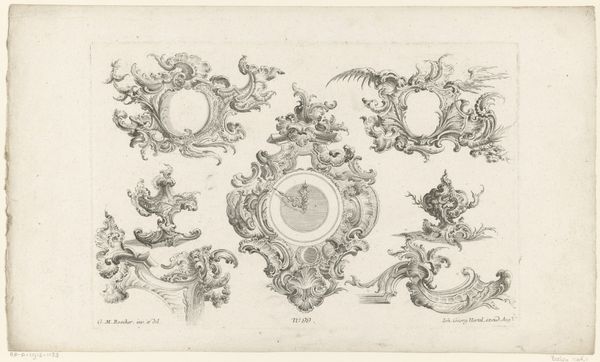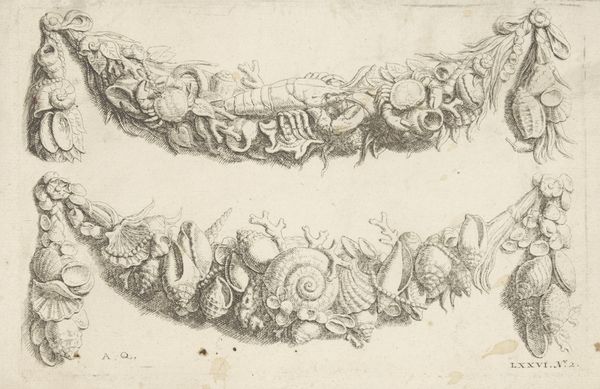
print, engraving
#
baroque
# print
#
decorative-art
#
engraving
Dimensions: height 177 mm, width 263 mm
Copyright: Rijks Museum: Open Domain
Editor: Here we have Jeremias Wachsmuth’s "Ornamental Jugs with snake," created sometime between 1721 and 1756. It's an engraving. The level of detail is impressive, and the overall effect is incredibly ornate, almost overwhelming. What stands out to you, and how do you interpret it? Curator: These aren’t just ornamental jugs; they're powerful displays of status. Think about the baroque style itself, its grandiosity and elaborate ornamentation – it's all about projecting power and wealth. These prints, multiplied and circulated, served as blueprints, shaping taste and influencing the design of actual objects. What do you notice about the motifs used? Editor: I see a lot of shells and foliage. Curator: Exactly! Seashells, particularly in this era, were highly prized collector's items, seen as emblems of luxury and exoticism. Incorporating them into designs, like on these jugs, directly associated the owner with those values. And where might these designs have circulated? Editor: Perhaps among wealthy families who wanted the latest designs for their homes? Curator: Precisely! The politics of imagery in the Baroque period went far beyond mere decoration. Objects like these, replicated via engravings and displayed in affluent homes, communicated cultural sophistication, wealth, and adherence to the prevailing sociopolitical order. The artist subtly enforced those values, too, don't you think? Editor: That makes so much sense. I didn’t consider how an engraving like this would have influenced tastes beyond the objects themselves. It's fascinating to see how art functions as part of a broader social and political context. Curator: It certainly gives one a lot to think about, regarding art’s reach and power!
Comments
No comments
Be the first to comment and join the conversation on the ultimate creative platform.
